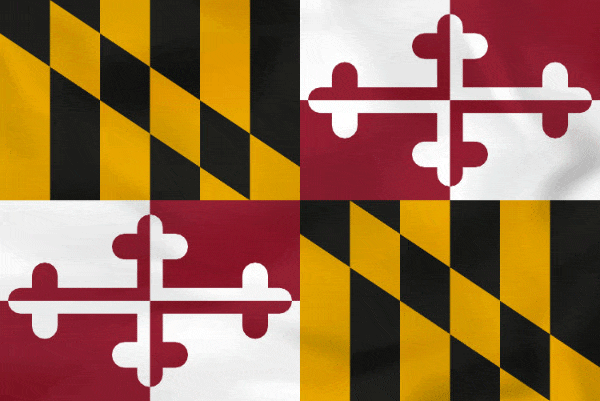Read this profile of Maryland to learn about the state's history, points of interest, and government. Also find interesting facts about each state, including the state's motto, symbols, and when it entered the union.
 History In 1608, Capt. John Smith explored Chesapeake Bay. Charles I granted a royal charter for Maryland to Cecil Calvert, Lord Baltimore, in 1632, and English settlers, many of whom were Roman Catholic, landed on St. Clement's (now Blakistone) Island in 1634. Religious freedom, granted all Christians in the Toleration Act passed by the Maryland assembly in 1649, was ended by a Puritan revolt, 1654–1658. From 1763 to 1767, Charles Mason and Jeremiah Dixon surveyed Maryland's northern boundary line with Pennsylvania. In 1791, Maryland ceded land to form the District of Columbia. In 1814, during the British attempt to capture Baltimore, the bombardment of Fort McHenry inspired Francis Scott Key to write the words to "The Star-Spangled Banner." During the Civil War, Maryland was a slave state but remained in the Union. Consequently, Marylanders fought on both sides and many families were divided. Maryland's Eastern Shore and Western Shore embrace the Chesapeake Bay, and the many estuaries and rivers create one of the longest waterfronts of any state. The Bay produces more seafood—oysters, crabs, clams, fin fish—than any comparable body of water. Important agricultural products are greenhouse and nursery products, chickens, dairy products, eggs, and soybeans. Stone, coal, sand, gravel, cement, and clay are the chief mineral products. Manufacturing industries include food products, chemicals, computer and electronic products, transportation equipment, and primary metals. Baltimore, home of the Johns Hopkins University and Hospital, ranks as the nation's second port in foreign tonnage. The capital, Annapolis, is the site of the U.S. Naval Academy. Among the popular attractions in Maryland are the Fort McHenry National Monument; Harpers Ferry and Chesapeake and Ohio Canal National Historic Parks; Antietam National Battlefield; National Aquarium, USS Constellation, and Maryland Science Center at Baltimore's Inner Harbor; Historic St. Mary's City; Jefferson Patterson Historical Park and Museum at St. Leonard; U.S. Naval Academy in Annapolis; Goddard Space Flight Center at Greenbelt; Assateague Island National Park Seashore; Ocean City beach resort; and Catoctin Mountain, Fort Frederick, and Piscataway parks. |




